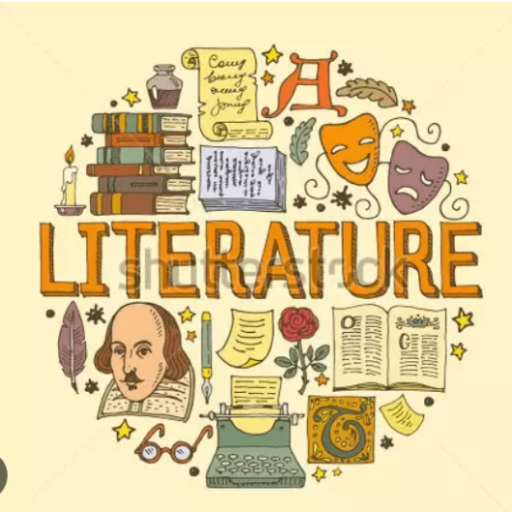Get a comprehensive summary of “Lyrical Ballads” by William Wordsworth, a Romantic poet. Explore the themes, structure, and notable poems in this influential collection of poetry. Discover the romantic vision of nature and humanity portrayed by Wordsworth in his lyrical compositions.
“Lyrical Ballads” is a groundbreaking collection of poems jointly authored by William Wordsworth and Samuel Taylor Coleridge. First published in 1798, this collection marked a significant shift in the landscape of English poetry, ushering in the Romantic era.
Advertisement
In this article, we delve into a detailed summary of “Lyrical Ballads” by William Wordsworth, highlighting its key themes, structure, and notable poems that capture the essence of the collection.
Advertisement
Lyrical Ballads by William Wordsworth Summary
The summary of “Lyrical Ballads” by William Wordsworth showcases the intertwining of nature, human experiences, and emotions, emphasizing the connection between man and his surroundings.
Advertisement
Wordsworth’s deep reverence for nature and his exploration of the human condition are central to this collection. The poems aim to evoke powerful emotions, spark introspection, and invite readers to appreciate the beauty and simplicity of the natural world. Now, let’s explore the collection further through its key aspects.
Advertisement
Preface: The Essence of Lyrical Ballads
In the preface to “Lyrical Ballads,” Wordsworth presents a poetic manifesto that sets the tone for the collection. He expresses his intention to write in a language familiar to the common people, steering away from the elevated diction of traditional poetry.
Wordsworth believes that ordinary experiences and emotions hold immense significance and can be a source of inspiration for poetic expression.
Nature as a Source of Inspiration
Wordsworth’s deep connection with nature is evident throughout the collection. The natural world becomes a canvas for exploring human emotions, spirituality, and the sublime.
Nature is depicted as a nurturing force that can bring solace, wisdom, and a renewed sense of purpose to individuals.
The Role of Imagination: Lyrical Ballads by William Wordsworth Summary
In “Lyrical Ballads,” Wordsworth emphasizes the power of the human imagination. He believes that the imagination has the ability to transform ordinary experiences into extraordinary ones.
Through poetic language and vivid descriptions, Wordsworth seeks to awaken the reader’s imagination and foster a deeper appreciation for the world around them.
Simplicity and Everyday Language
A departure from the ornate and artificial language of traditional poetry, “Lyrical Ballads” embraces simplicity and everyday language. Wordsworth seeks to capture the authenticity of human experiences by employing a more accessible style.
This shift in language aligns with his vision of connecting with a broader audience and expressing the universal aspects of human existence.
Notable Poems in “Lyrical Ballads”
The collection features several notable poems, each contributing to the overarching themes and ideas presented by Wordsworth. Here are a few examples:
“Lines Written a Few Miles Above Tintern Abbey”
This introspective and reflective poem describes the speaker’s return to a beloved natural setting after five years of absence.
Wordsworth explores the transformative power of nature and the lasting impact it can have on an individual’s memory and emotions.
“The Rime of the Ancient Mariner”
While “The Rime of the Ancient Mariner” is primarily written by Coleridge, it appears in the 1800 edition of “Lyrical Ballads.” This haunting tale follows a mariner who faces supernatural consequences after killing an albatross.
The poem delves into themes of guilt, redemption, and the interconnectedness of all living beings.
“The Tables Turned”
In this poem, Wordsworth advocates for a return to nature and criticizes the overemphasis on bookish knowledge. He urges his readers to seek wisdom and joy through direct engagement with the natural world, highlighting the transformative power of nature in fostering personal growth.
The Bottom Line: Lyrical Ballads by William Wordsworth Summary
“Lyrical Ballads” by William Wordsworth remains a significant milestone in the history of English literature. Through its exploration of nature, human experiences, and the power of imagination, the collection captures the essence of Romanticism.
Wordsworth’s visionary approach and emphasis on simplicity continue to inspire readers and poets alike. Dive into the “Lyrical Ballads” to witness the profound connection between poetry, nature, and the human soul.
Frequently Asked Questions
“Lyrical Ballads” is significant because it marked a turning point in the history of English poetry. It introduced a new style and approach to writing, emphasizing the beauty of everyday experiences and the importance of a personal connection with nature.
“Lyrical Ballads” played a crucial role in shaping the Romantic Movement by championing individual emotions, the sublime power of nature, and the use of everyday language in poetry. It laid the foundation for a more personal and introspective approach to literature.
Apart from “Lyrical Ballads,” Wordsworth’s notable works include “The Prelude,” “Ode: Intimations of Immortality,” and “I Wandered Lonely as a Cloud” (commonly known as “Daffodils”).
In “Lyrical Ballads,” Wordsworth explores the concept of the sublime through the depiction of awe-inspiring natural landscapes. The sublime refers to experiences or objects that elicit a sense of overwhelming beauty and awe, often accompanied by a sense of fear or insignificance.
The reception of “Lyrical Ballads” was mixed upon its initial publication. The collection challenged established poetic norms, which led to both admiration and criticism. However, over time, “Lyrical Ballads” gained recognition as a pivotal work in English literature.
“Lyrical Ballads” embodies many of the key ideals of the Romantic Movement, such as the celebration of nature, the exploration of human emotions, the rejection of traditional poetic conventions, and the belief in the transformative power of the imagination.

